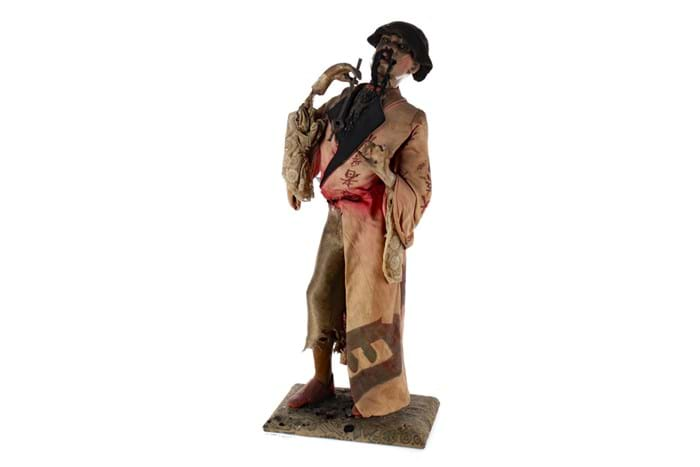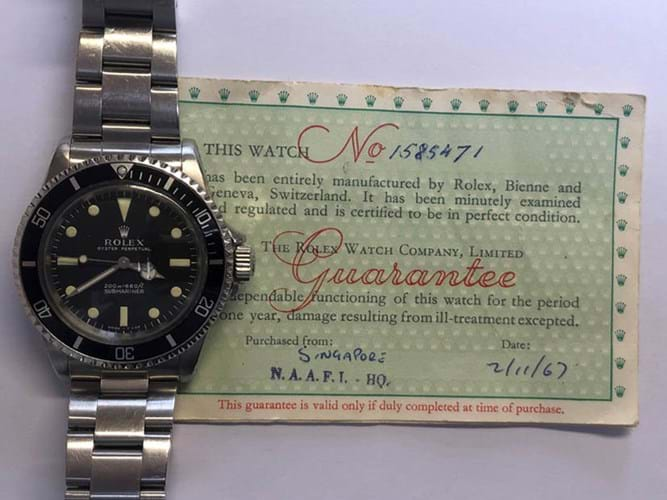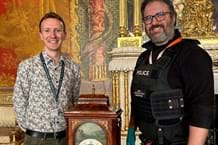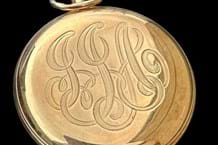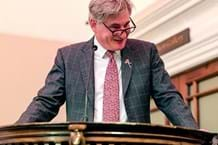1. Beatrix Potter tea wares – £2200
Not to be confused with the modern Peter Rabbit series by Wedgwood, these much scarcer teawares, pictured above, were made by the Grimwades factory in the 1920s. Beatrix Potter, (who had rejected a series of models of her characters by Royal Doulton) agreed a partnership with Leonard Grimwade in 1917 for a range of transfer printed nursery ware, in part to curb the volume of pirated china on the market.
Grimwade’s did not actually begin manufacturing until 1922, blaming war-time shortages, but Potter was pleased with the final results and ordered a selection for Christmas presents.
Single pieces, particular cups, saucers and teaplates, can be found with relative ease at £20-50. However, the lot offered by the Wessex Auction Rooms in Chippenham on April 10 was appealing for its sheer volume of pieces (more than 100 at a rough count), the inclusion of some of scarcer forms and patterns and the presence of an original box with its Squirrel Nutkin, Jemima Puddle Duck and Tom Kitten artwork. The latter was not in great condition but seldom survives and is typically often offered in reproduction.
The £50-100 guide was always going to be broken tenfold and more: ultimately it was hammered down at £2200.
2. Gustav Vichy’s opium smoker automaton – £7200
Estimated at just £100-200, this automaton of a stereotypical Chinaman smoking an opium pipe sold for £7400 at McTears in Glasgow on April 7. It came for sale from a couple based on the west coast of Scotland whose family had owned it since the 1940s.
As suggested by the catalogue description (‘possibly by Leopold Lambert or Gustav Vichy’), this is a well-known model made by the great Parisian automaton maker Gustav Vichy (1839-1904) around 1880-90.
When operative the clockwork motor and mechanism performs seven movements in a realistic vignette of a connoisseur opium smoker. Turning his head upward and then left to right, he raises the pipe to his mouth, inhales while opening and closing his eyes, raises his left hand as though to signal his pleasure, and then exhales. An internal system of tubing that begins with a hole in the right hand creates the smoking illusion.
Prices for automaton vary widely according to condition. At recent specialist sales in the US, examples of the Vichy opium smoker, that stands around 2ft 4in (70cm) high on its velvet covered stand, have brought between $10,000-$30,000 depending upon the degree of repair and replacement.
This Glasgow survivor was in outwardly poor order with the papier-mâché head and hands cracked and with losses and the velvet, silk and lace robe faded and distressed. The mechanism was also not functioning. However, in its favour was a complete absence of restoration and the sort of inviting estimate that brings everyone to the party.
The buyer was the House of Automata in Forres in the north of Scotland.
3. Copy of Shakespeare’s marriage bond – £8500
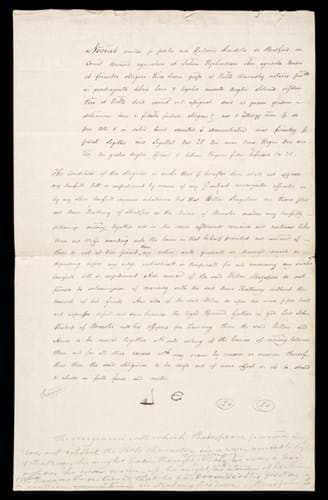
An 1836 copy of Shakespeare’s marriage bond sent to antiquarian Sir Thomas Phillipps – £8500 at Dominic Winter.
Penned by a clerk at the Worcester Registrar's Office in 1836, this document is a written transcript of the bond dated November 28, 1582 issued when William Shakespeare sought to marry Anne Hathaway. It was sent with a covering letter to Sir Thomas Phillipps (1792-1872), the antiquary and bibliophile who amassed perhaps the largest collection of manuscript material ever owned by a British private individual.
Phillipps had personally discovered the original Elizabethan bond – treasured today as one of the few surviving official records regarding Shakespeare’s life and marriage – among the archives in Worcester and had requested a copy be sent to him at his home the Middle Hill estate, Broadway.
The letter dated June 2, 1836 reads: ‘Sir, On the other side I send you a copy of the bond given at the time of obtaining a marriage licence for William Shakespeare and Anne Hathwey [sic]. We have been very busy in preparing for the Bishops Visitations which commence on Tuesday next and end on the following Saturday after which time copies of the Wills you wrote for shall be sent. Your very obt. sevt. James Davis.’
It came for sale at Dominic Winter in South Cerney on April 7-8 with a guide of £300-500 but, as a lot that neatly united Britain’s greatest ever writer with one of its greatest ever collectors, it took £8500.
4. Rolex Submariner – £12,000
This Rolex Submariner wristwatch was bought new by a sailor while serving on a ship at Singapore. The owner bought it for £32 10s in 1967 from the NAAFI having watched James Bond in the film Dr No wear a similar Submariner.
The owner had decided to sell after 54 years as it has become too valuable for him to wear. It was expected to bring £10,000-12,000 in the Charterhouse two-day April 8-9 auction in Sherborne and made the top estimate.
“Our client bought the watch new while serving as a Leading Aircrewman in the Fleet Air Arm. He recalls it cost about two weeks’ wages,” says auctioneer Richard Bromell.
The watch – a dial variant – came with its original Rolex green leather covered box and the guarantee, dated November 2, 1967.
5. Photos of a Pre-Raphaelite beauty – £2600
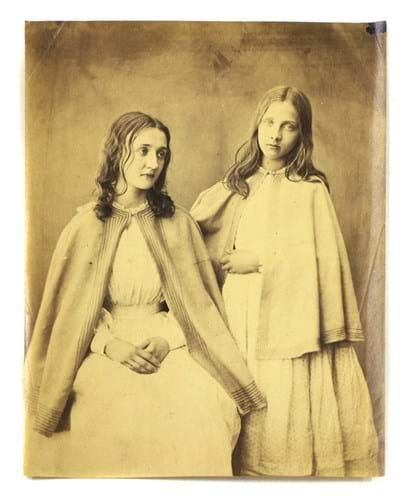
One of two photographs of Julia Prinsep Stephen, right, with her sister Mary Louisa Fisher that sold together £2600 at Sworders.
Original photographs of a well-known Pre-Raphaelite beauty sold for £2600 at Sworders on April 14. The two albumen prints of Julia Prinsep Stephen (1846-95), the muse of William Holman Hunt and the mother of Virginia Woolf and Vanessa Bell, had been guided at £500-800 as part of the Stansted firm’s Out of The Ordinary sale on April 13. They sold to an American museum.
Julia Jackson was born in Calcutta, capital of British India, in 1846 but moved to England with her family to Little Holland House in Kensington as an infant. Deemed one of the most beautiful women in England, she attracted many suitors among a circle of family friends that included the good and the great (Benjamin Disraeli, Thomas Carlye, Alfred Lord Tennyson) and artists such as Dante Gabriel Rosetti, Edward Burne-Jones and George Frederick Watts. A favourite model of Julia Margaret Cameron (her maternal aunt and godmother) she also sat for the sculptor Thomas Woolner and Holman Hunt – who both proposed marriage when she turned 18. It was said that Holman Hunt only married his second wife, Edith Waugh, because she resembled Julia.
Victorian pioneers
The first of the two photographs shows Julia, aged 11, together with her sister Mary Louisa Fisher. It was taken in 1857-58 by either the Manchester photographer James Mudd or Joseph Cundall, another Victorian pioneer who made the first photographic record of the Bayeux Tapestry.
An identical but smaller print to this was part of the famous ‘Signor 1857’ photograph album that Julia Margaret Cameron composed before herself choosing to become a photographer.
The author of the second photograph is uncertain although it may be one of more than 50 portraits Cameron made of her niece. It dates from the mid 1860s, when Julia (having declined to become Mrs Holman Hunt) had become engaged to Herbert Duckworth, a barrister and member of the Somerset landed gentry. Married for just three years, she was devastated by her husband's untimely death and (with three young children) refused to contemplate remarrying for many years. However, in 1878 she accepted the proposal of the writer and critic Leslie Stephen with whom she would have four more children – all of them influential members of what would be known as the Bloomsbury Group.



